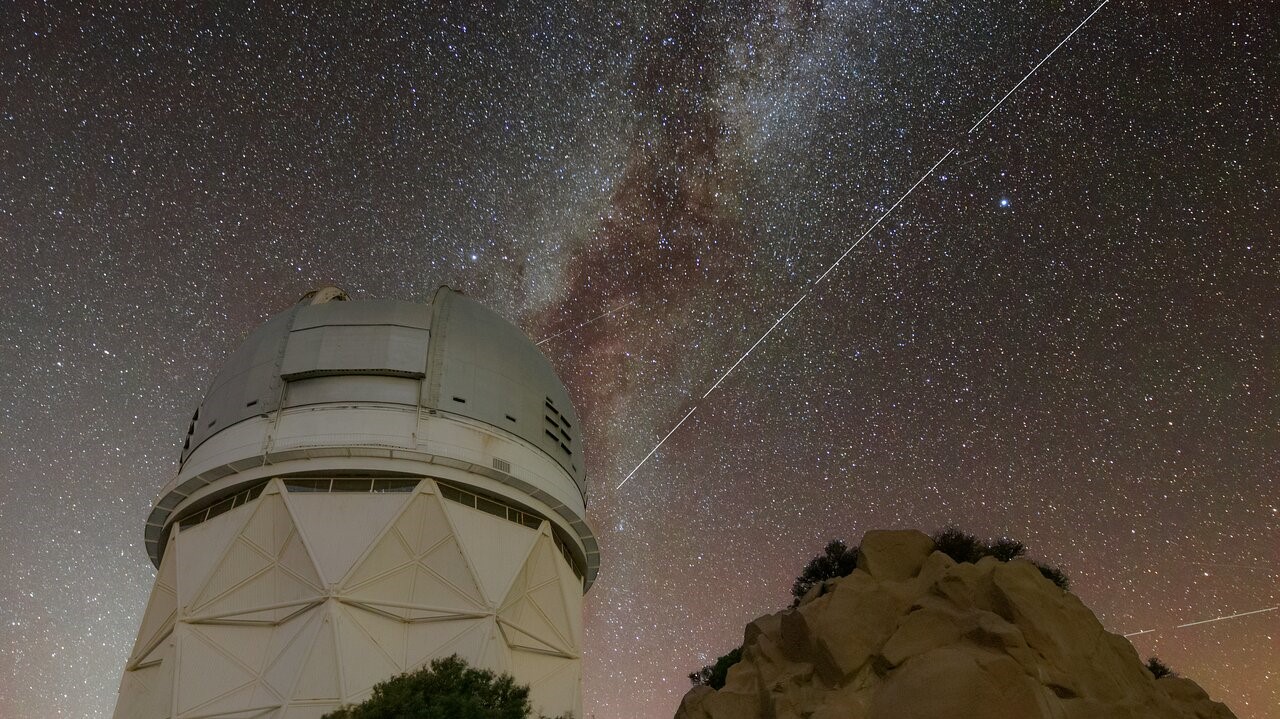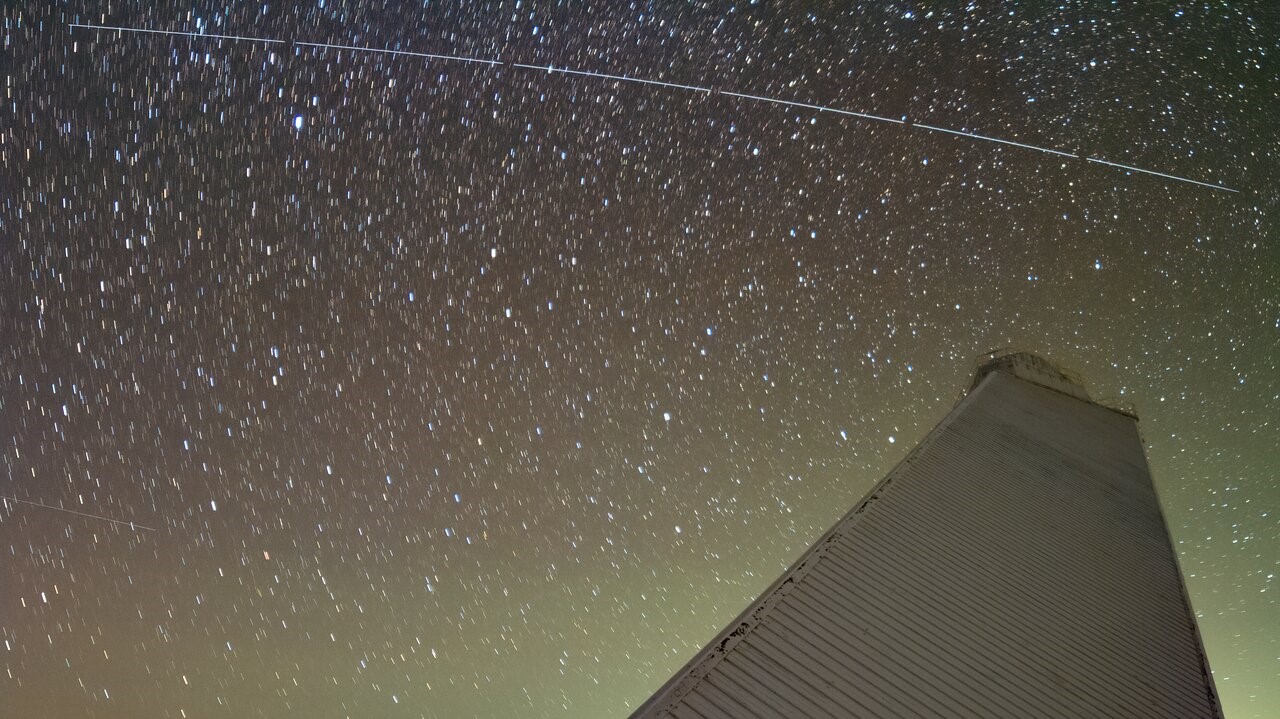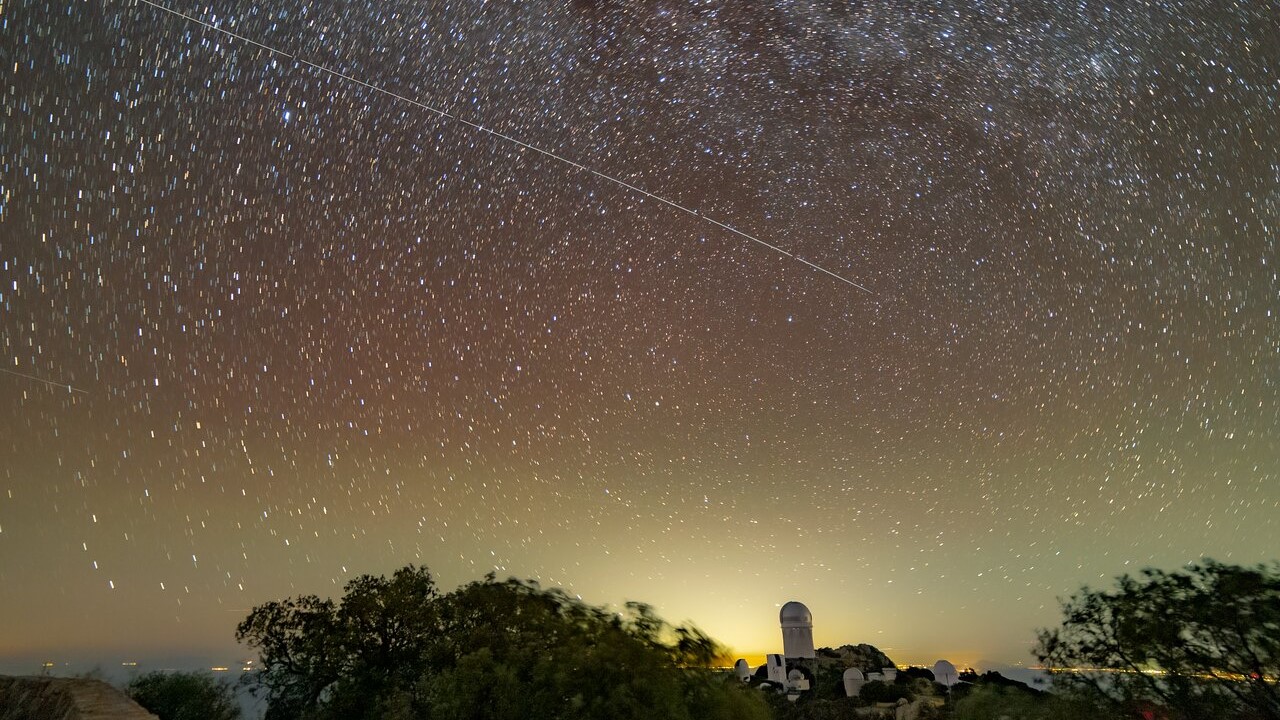World's largest communication satellite is a photobombing menace, astronomers warn
The International Astronomical Union has issued a warning over the newly launched BlueWalker 3 satellite, which is causing interference for both optical and radio telescopes.
A giant new communications satellite that outshines almost all the stars in the night sky is obscuring telescopes’ views of the universe, scientists warn.
The massive orbiting "cell phone tower," known as BlueWalker 3, is creating both visible and invisible interference that could "severely hamper progress in our understanding of the cosmos," representatives of the International Astronomical Union (IAU) said in a statement.
BlueWalker 3 is a prototype antenna that was designed and built by Texas-based communications company AST Space Mobile. The satellite launched into low-Earth orbit on Sept. 10 and unfurled its massive communications array on Nov. 14, Live Science's sister site Space.com reported. The mirror-like dish has a surface area of around 693 square feet (64 square meters), making it the biggest commercial communications array ever launched into orbit.
However, BlueWalker 3 has one glaring issue: The satellite’s enormous dish is reflecting massive amounts of sunlight back to Earth's surface, the IAU’s Center for the Protection of the Dark and Quiet Sky from Satellite Constellation Interference (CPS) said in the statement. The astronomers released a number of timelapse photos captured by observatories from around the world showing the satellite photobombing the night sky — appearing as a continuous bright white line across the sky.
Related: How many satellites orbit Earth?
"This satellite has become one of the brightest objects in the night sky," IAU representatives wrote in the statement, "more so than other constellation satellites and at times as bright as some of the most recognizable stars."
And the supersized satellite is not just blocking telescopes’ optical views of the universe. The IAU also warns that the cell phone signals emitted by the communications satellites could create significant interference for radio telescopes too.
Get the world’s most fascinating discoveries delivered straight to your inbox.
"These orbiting transmitters, which are not subject to the same radio quiet zone restrictions as ground-based cellular networks, have the potential to severely impact radio astronomy research," IAU representatives wrote.
BlueWalker 3 is the latest flashpoint in an ongoing debate about astronomical interference caused by communications satellites, which started when SpaceX launched its first Starlink satellites in 2019. (There are now more than 2,000 Starlink satellites orbiting our planet, which could rise to many as 12,000 in the coming years). But BlueWalker 3’s enormous size could prove a major turning point in the discussion.
"BlueWalker 3 is a big shift in the constellation satellite issue and should give us all reason to pause," Piero Benvenuti, director of the IAU CPS, said in the statement.



A single BlueWalker 3 satellite in orbit may only be a slight nuisance to astronomers at present, but AST plans to launch a fleet of "more than 100 similar or even larger satellites" in the future as it attempts to build a worldwide mobile network, IAU representatives wrote. This could make it almost impossible for astronomers to avoid the satellites' photobombing glare.
IAU representatives wrote that the astronomical community acknowledges commercial satellites will play an important role in improving global communication systems, but argues that their deployment "should be conducted with due consideration of their side effects and with efforts made to minimize their impact on astronomy."
The IAU's warning comes after the U.S. Federal Communications Commission (FCC) announced on Nov. 3 a proposal to create the "Space Bureau and Office of International Affairs," which will help to address the emerging issues surrounding large satellite constellations in the U.S. and globally, according to IAU.

Harry is a U.K.-based senior staff writer at Live Science. He studied marine biology at the University of Exeter before training to become a journalist. He covers a wide range of topics including space exploration, planetary science, space weather, climate change, animal behavior and paleontology. His recent work on the solar maximum won "best space submission" at the 2024 Aerospace Media Awards and was shortlisted in the "top scoop" category at the NCTJ Awards for Excellence in 2023. He also writes Live Science's weekly Earth from space series.




